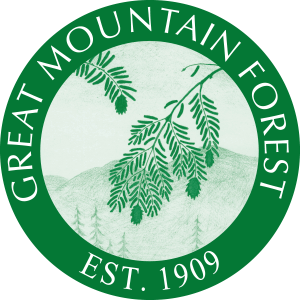Norfolk’s November & December Weather & a Yearly Summary for 2016
By Russell Russ
After tracking a growing precipitation deficit and above average temperatures for the entire year, it was quite the twist in weather fate to have an early winter with snowy conditions before Thanksgiving. The closing months of 2016 were still a little warmer than normal, but they were also above average for snowfall. Precipitation did come in the form of rain and snow during the last two months of the year, but as it had done for most of the year, the deficit kept on growing. The end of 2016 completes 85 years of continuous weather observations at the Norfolk 2SW weather station and it was a notable weather year in many ways.
November’s average temperature of 38.9 degrees was 1.8 degrees above normal. Temperatures ranged from a high of 65 to a low of 23 degrees. Precipitation for the month was 3.70 inches, 0.9 inches below normal. It was a snowy November with a monthly snowfall total of 14.8 inches. This was 8.3 inches above normal and ranked as Norfolk’s eleventh snowiest November on record. The snowstorm on November 20-21 dumped 14.2 inches making it one of our larger November snowfalls on record.
By comparison, November of 2015 was over five degrees above normal with just a trace of snowfall. The precipitation deficit for the year grew after November, but at month’s end we knew the year would not rank as the driest year on record. By late in the month we had received just enough moisture to put 2016 into second place.
December was a little warmer and a little drier than normal. Temperatures ranged from a high of 48 degrees to a low of minus 2 on December 16, which tied the 1943 record low for that date. December’s average temperature of 27.2 degrees was 1.5 degrees above normal — a far cry from last December’s record shattering warmth. December 2015 was by far our warmest December, coming in 14 degrees warmer than normal. With a total precipitation amount of 4.27 inches this December was just 0.27 inches below normal. December’s monthly snowfall total of 19.5 inches was 2.6 inches above normal.
Most local ponds and lakes were ice covered between December 6 and 13. Pond ice this early is fairly common, but it has been six years since we have seen it form this early in the season. The ponds stayed frozen through the end of the month. Snow was on the ground for most of December, giving us a white Christmas to go with our white Thanksgiving.
The year of 2016 will be remembered as being very dry. Every month except February was below normal for precipitation. After February we were 0.69 inches above normal, but then every other month to follow was below normal, gradually increasing the deficit with each passing month. January through March were well below normal for snowfall. Most months in the January to September period ranked within the top ten for either warmth or least amount of precipitation — or both. February was the exception.
The coldest day of the year was Valentine’s Day, February 14, when a low of minus 19 was recorded. There were two days that recorded temperatures of 90 degrees or above, about average for Norfolk, but something we have not seen in several years. July was the seventh warmest month and August the thirteenth warmest month out of all months on record. October to December were above average for temperature and below average for precipitation, but they were more on the normal side.
Every month in 2016 came in above normal for temperature. The yearly mean temperature was 47.7 degrees, 2.9 degrees above normal. This placed 2016 tied with 2002 as Norfolk’s fifth warmest year on record. Last year (2015) was tied with 2007 and 2008 as being the twelfth warmest.
With January to May being mostly below normal for snowfall it was no surprise then that the 2015-2016 Winter Season (October-May) snowfall amount of 35.5 inches was the lowest on record. For the 2016-2017 Winter Season through December we were already at 36.8 inches, this is 12.5 inches above normal. The 2016 calendar year snowfall amount of 70.8 inches was 19.2 inches below normal.
What we will all remember about 2016, thanks in part to the vast amounts of publicity it was given, is the minimal amount of precipitation that occurred throughout the year. Streams, rivers, ponds, reservoirs and private wells were all showing signs of drought. This worsened as the summer and fall progressed. The yearly precipitation amount of 38.36 inches was 14.33 inches below normal, ranking 2016 as Norfolk’s third driest year on record. Norfolk’s driest years were 1965 with 33.89 and 1935 with 38.06 inches. The year came to a close, but the deficit is still a concern. With 2015 being our seventh driest year and 2016 being our third driest we are looking at a running two year deficit of 25.55 inches. We need rain or snow or both and in good amounts to reverse this trend. Looking back at November and December there were some signs showing that things may be changing. For the sake of our water supplies let’s hope so.


